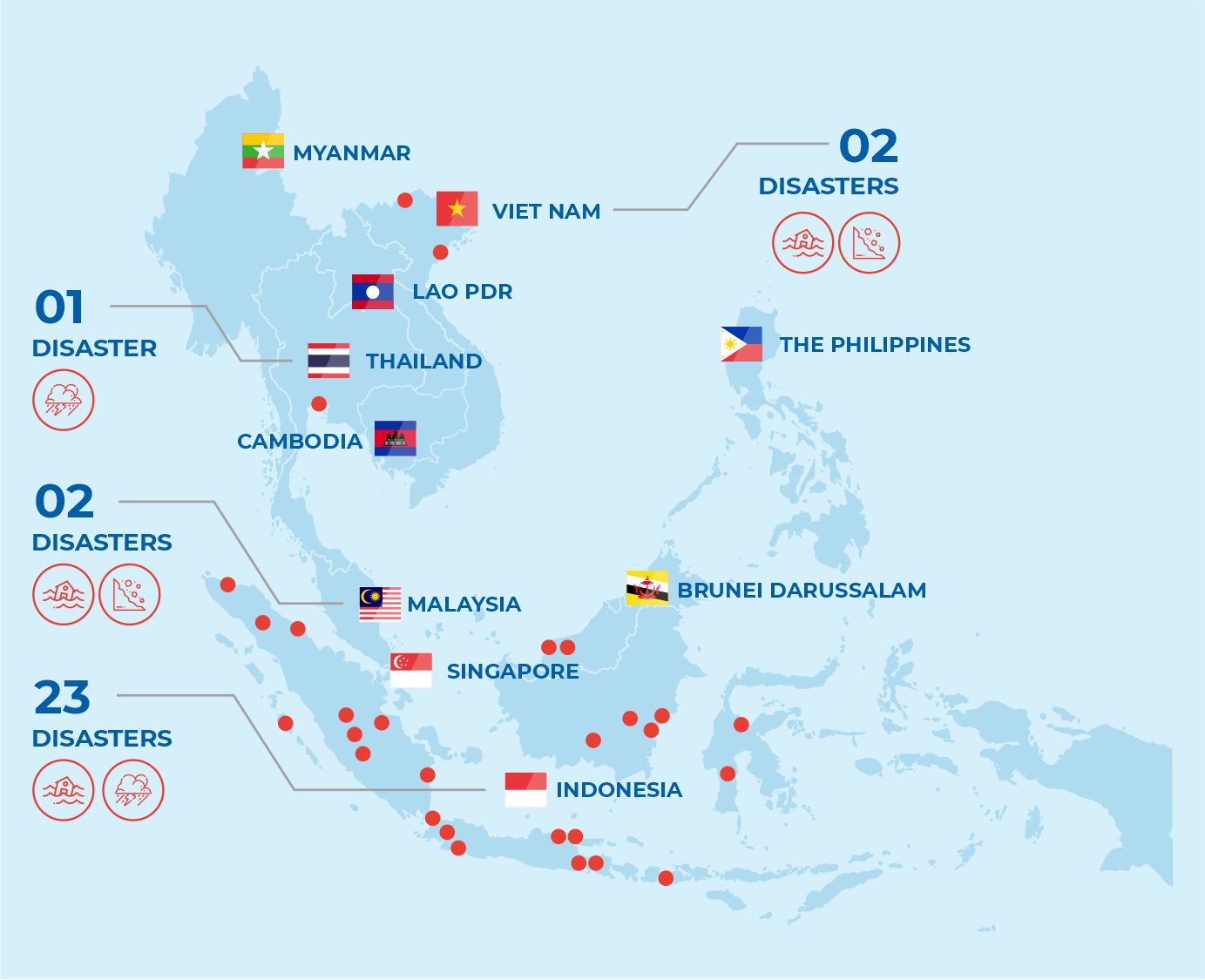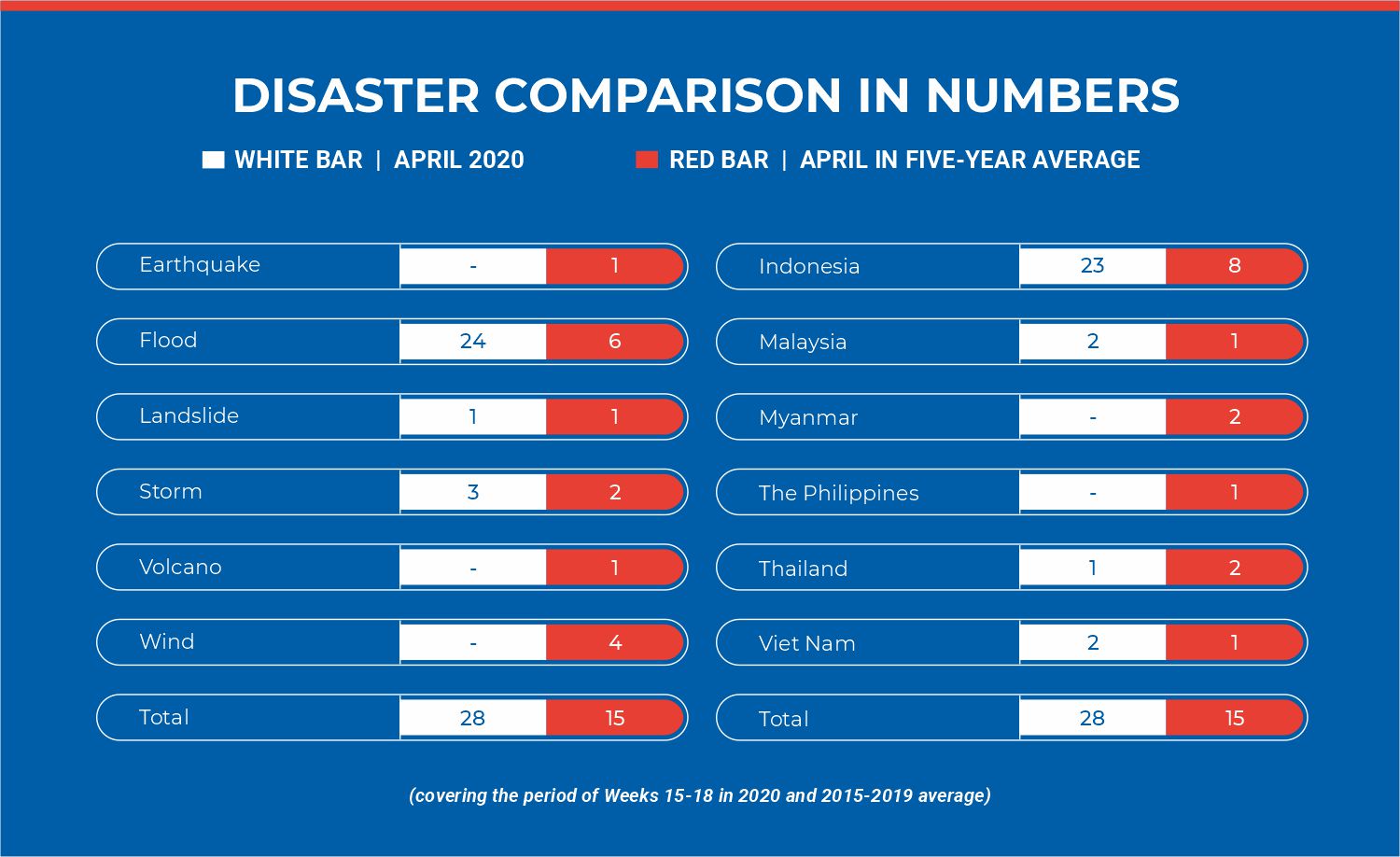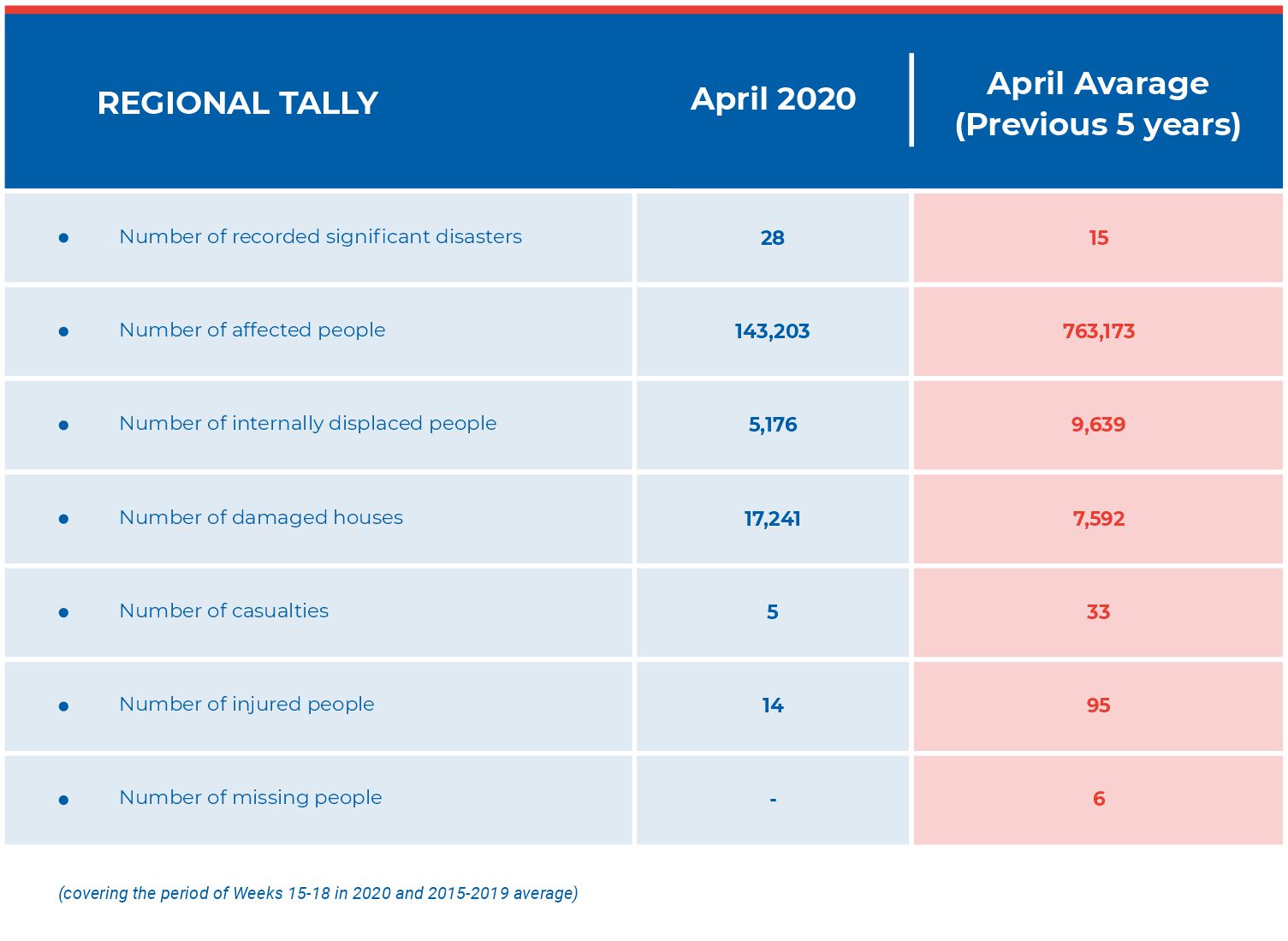
MONTHLY DISASTER REVIEW AND OUTLOOK
APRIL 2020 | DISASTER MONITORING & ANALYSIS
(DMA) UNIT, AHA CENTRE
GENERAL REVIEW OF APRIL 2020
The month of April 2020 evidenced a clear deviation in figures of significant disaster occurrences in comparison to the previous five-year average for April, with an 87% increase of events recorded for the month. A majority of disasters (86%) for the month of April were flooding events, with storms (11%) and landslides (3%) also registered. However, despite the increase in occurrences of significant disasters, the impact in terms of affected people was significantly lower than the five-year average with an 81% decrease. The number of people displaced by disaster events also decreased (46% less), however the impact was more severe on people’s homes with a 2 ½ times increase of damaged houses reported (17,241 in total). There were 85% less deaths as well as less injuries for April 2020 in comparison to the previous five years. 50% of all disasters for the month occurred in one week alone (week 18), which may be attributed to an increase in precipitation rates of approximately 100mm across the Indonesian islands of Sumatra and Java, compared to the previous averages during that single week.
Geophysically, for April 2020, 21 earthquakes with magnitudes greater than or equal to 5.0M were recorded by respective ASEAN Member States’ local seismic authorities. For the first half of April 2020, six volcanoes in Indonesia displayed increased activity but remained at Alert Level II according to Indonesia’s Pusat Vulkanologi dan Mitigasi Bencana Geologi (PVBMG). Meanwhile later in the month, three volcanoes in Indonesia (Agung, Sinabung, and Karangetang) moved to at Alert Level III, with one volcano in the Philippines (Mayon) on Alert Level 2. This highlights the importance of earthquake preparedness and the immediacy of response in tectonically active countries such as Indonesia and the Philippines based on their location along the Pacific Ring of Fire.
SEASONAL OUTLOOK
During the May to July 2020 period, rainfall over the northern ASEAN region is forecast at below-average rates. Similar forecasts for rainfall conditions are predicted for most parts of western mainland Southeast Asia (Myanmar, northern Thailand and northern Laos), however most parts of the southern ASEAN region can expect above-average rainfall. Overall, the entire ASEAN region can expect above-average temperatures.
In the Mekong sub-region, the start of the Southwest Monsoon period should improve haze conditions and gradually subdue hotspot and fire activities. In the southern ASEAN region, hotspot activities are expected to remain generally subdued for May 2020. However, a gradual increase in hotspot activities, particularly in the fire-prone areas of Sumatra and Kalimantan, can be expected from June with the onset of the traditional dry season in the southern ASEAN region.
Data Sources: ASEAN Disaster Information Network, ASEAN Specialised Meteorological Centre
Written by : Keith Landicho and Lawrence Anthony Dimailig
DISCLAIMER
Disclaimer: AHA Centre’s estimation is based on data and information shared by National Disaster Management Organisations (NDMOs) and other relevant agencies from ASEAN Member States, international organisations and news agencies. Further information on each recorded-significant disaster, description and detail of data and information are available at: http://adinet.ahacentre.org/reports.



